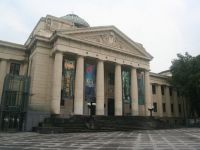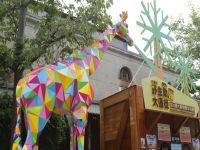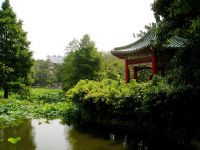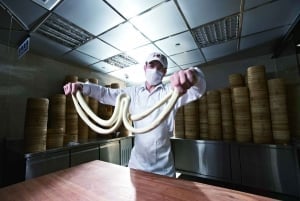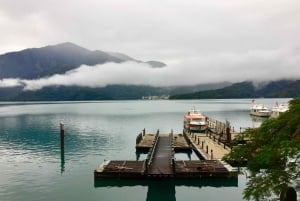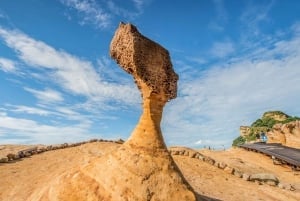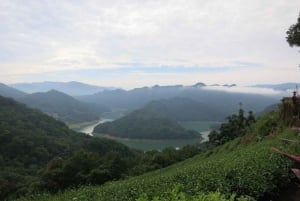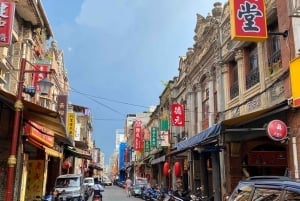ZhongZheng District
Zhongzheng District
The Zhongzheng District, another area of the city named for R.O.C. founder Chiang Kai-shek, and a center of government, transportation, history, and culture. Whether they know it or not, many visitors to Taipei begin their visit to the city here, getting off a train at Taipei Main Station, the place of departure for all points east, west, north and south in Taipei City and all of Taiwan for those traveling by rail. If you happen to be heading out of Taipei, the area around the station is also where you'll the major bus terminals, the largest of which being Taipei Bus Station. It's just across the street from Main Station on Civic Boulevard.
Government
Zhongzheng is also where the seat of power lies for the federal government in Taiwan, with the Presidential Office, the Legislative Yuan, the Executive Yuan, the Control Yuan, and the Judicial Yuan all found within its boundaries. Politics can often be as interesting as watching paint dry, but in Taipei the politicos keep it interesting, occasionally setting off shoe-throwing melees when debates get particularly impassioned.
The architecture of the Presidential Office, a leftover of the Japanese Colonial Era, is an impressive sight, with its tall tower watching over Ketagalan Boulevard below. This is where large-scale political rallies, which seem to happen fairly frequently in Taipei, inevitably end up, with largely peaceful marchers in their hundreds of thousands gathering to make their collective voice heard. The area around the Presidential Office is also where you'll find the headquarters of most of the government agencies.
History and Culture
Taiwan is a relatively new democracy, with the first free elections only having taken place in the latter stages of the 20th century. Prior to that was a period of political turmoil, violence and fear known as the White Terror, during which thousands of real and perceived dissidents to the regime of Chiang Kai-shek and later his son, Chiang Ching-kuo, were imprisoned or even killed. Standing just across Ketagalan Boulevard from the Presidential Office is the 228 Memorial Park, which commemorates an incident which took place on February 28th, 1947, in which a protest against the ruling Kuomintang government turned bloody, and the White Terror era was subsequently ushered in. <a data-cke-saved-href="http://en.wikipedia.org/wiki/Chiang_Kai-shek target=" href="http://en.wikipedia.org/wiki/Chiang_Kai-shek target=" _blank"="">
The National Taiwan Museum, featuring exhibits on Taiwan's pre-history and indigenous cultures, stands at the park's northern entrance. Regardless of Chiang Kai-shek's terrible record when it came to human rights, tributes to him still abound, none larger than Chiang Kai-shek Memorial Hall, a place rife with symbolism and grandiosity. The sprawling grounds, known alternately as Liberty Square or Chiang Kai-shek Memorial Plaza, depending on which of the opposing parties that comprise the Taiwan political spectrum is in power, are overlooked by the hall itself, which stands 70 meters in height. Also on the grounds of Taipei's largest public square are the National Theater and the National Concert Hall, the top venues for classical music and other such high-brow performances.
Performances of a different nature can be take in at Huashan 1914 Culture Park, a collection of century-old buildings that once comprised the Taipei Winery. Named for the year of its founding, the park is home to a music venue called Legacy, as well as art and theater spaces, with shows of various kinds taking place daily. There are also restaurants with in the parks confines if you're looking for a bite to eat. The park is just a few minutes away on food from exit 1 of the Zhongxiao-Xinsheng MRT Station.
Taipei Botanical Gardens, one of the city's great oases of greenery can also be found in Zhongzheng. A five-minute walk from exit 3 of the Xiaonamen MRT Station, the park offers ample shade and a welcome respite from the sun during the spring and summer months. There are lily ponds, and bilingual introductions to the trees, flowers, and other plants native to Taiwan, with some 1,500 species introduced in all. One of the major highlights is the tranquil lotus pond, and there is also a Buddhist garden, a bamboo garden, and an exhibit on plants featured prominently in Chinese literature, among many other attractions.The gardens are open daily from 5:30 a.m. to 10 p.m., and admission is free for all.


